Like so many other competitions, showing livestock has changed over the years. From the American Royal in 1899 to the Fort Worth Stock Show beginning in 1896, the National Western Stock Show that got its start in 1906, the Houston Fat Stock Show and Livestock Exposition in 1931, and the Arizona National Livestock Show in 1948, many of the original stock shows were a means to improve the nation’s cowherd.
Now, many of these shows serve as a place to represent agriculture to the public and provide a place for junior exhibitors to show off their perfectly finished and fitted stock.
Many of the original, major shows, held in some of the largest cities in the United States, were initially associated with stockyards owned by the railroads. In the early 1900s, herdsmen slept on train cars during what’s known as the “riding the rail” era, which lasted until the 1950s. The start of the show season was often the Arizona National Livestock Show, which was held at the beginning of the year (and is now held at the end of the year).
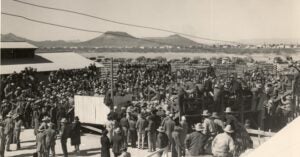
Show cattle of the 1930s
During the 1930s, helping to create a market for high-quality seedstock was a priority up through World War II. Show rings also served as a place to advertise seed stock breeding operations.
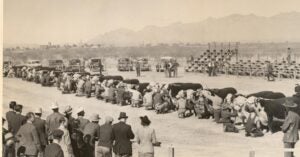
To increase interest, in the 1940s and 1950s, some of the national shows began holding calf scrambles for young people in 4-H and FFA clubs, who chased calves around the ring trying to catch and halter a calf and lead it to the gate.
The Houston Livestock Show introduced rodeo entertainer Gene Autry, the “Singing Cowboy,” while the American Hereford Association held a show at the American Royal with $75,000 in premium money.
‘Belt buckle’ cattle of the 1950s and 1960s
It’s almost humorous to look at the extremes of show cattle in the 1950s and 1960s, where stock show animals were not typically taller than an exhibitor’s waist. Producers selected small-framed stock with easy feeding efficiency.
However, dwarfism became a problem among Hereford and Angus cattle. In the late ’50s to early ’60s, cattle size leveled out some.
The line-ups of exhibitors showing livestock kneeling or on their knees were almost as intriguing as the state of early show cattle.
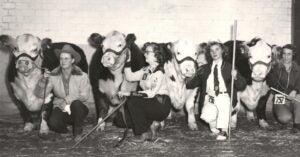
In 1964, Miss America Vonda Kay Van Dyke, an Arizona native, visited the show. Other entertainers such as John Wayne and Slim Pickens also became a part of the show in later years.
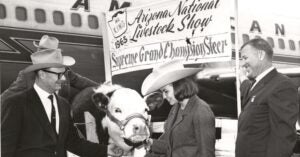
»Related: Talking livestock: Show breed classifications
Crossbred cattle make their way into the 1970s ring
In the early 1970s, smaller-framed, heavily muscled animals were easy to find. However, crossbred cattle began making their way into the show ring.
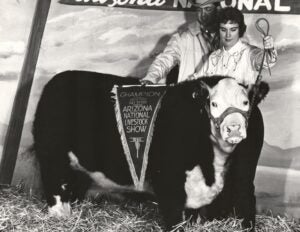
Crossbred cattle in the 1970s were often lean and trim with lower body capacity.
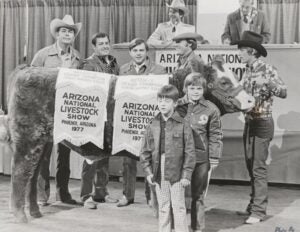
While we’re discussing developing types of show cattle, clipping and fitting show animals have also changed over the decades.
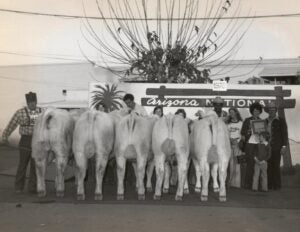
Even though cattle were undoubtedly a highlight of many of the major shows, sheep and hogs were also exhibited.
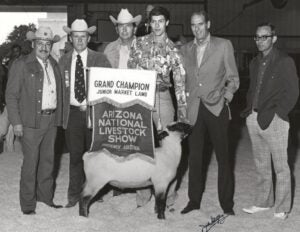
»Related: Show animals vs. commercial animals: What’s the difference?
1980s livestock shows
In the 1980s, exotics and imported European breeds became more pertinent. The cattle in the show ring increased in frame size, and the National Beef Conference announced a “Blueprint for the Right Kind” recommendation for producers to focus on moderate frame size and muscle thickness. Along with that recommendation, many show animals became straight in their structure.
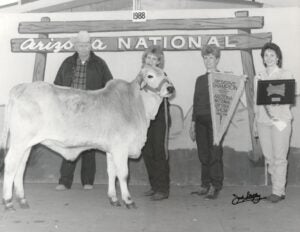
Sheep and hogs did not escape structural challenges associated with their counterparts.
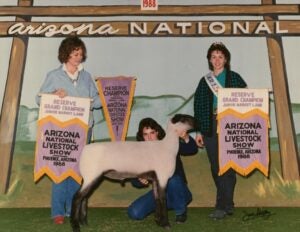
Tight-muscled, lean hogs were also the normal for decades. However, as tax laws were changed by then-President Ronald Reagan in 1986, livestock shows shifted their primary focus to junior livestock exhibitors.
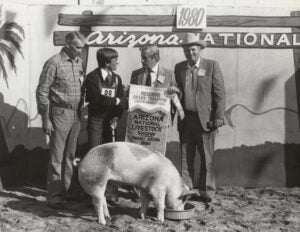
Controversy became a topic of conversation in the 1990s
As the competition increased and the cash prizes grew, concern for drug use in livestock shows grew. The Houston Livestock Show and Rodeo began testing show animals for the presence of drugs in 1989, and exhibitors completed a survey sponsored by East Texas State University in 1990, revealing that 25 percent of exhibitors admitted to giving illegal drugs to their livestock.
“Prior to 1994, people didn’t talk about cattle mistreatment in livestock shows,” noted Jeff Goodwin, Ph.D. “Now we openly approach this issue from two sides. The first, enforcement through random drug testing and a strict, orderly chain of evidence gathering, is combined with the second, education.”
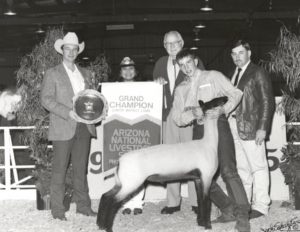
Hogs into the early 2000s continued to be finer boned, extremely lean with muscle shape, steeper hips, and impressive growth.
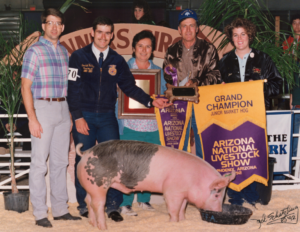
Moving into the 2000s
The beef industry began emphasizing carcass traits, frame size, and structure in the 2000s.
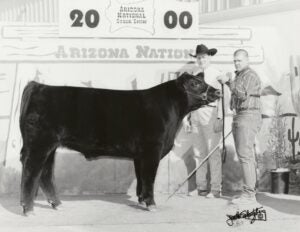
While sheep remained tall and lean, in the 2000s, a trend toward somewhat more pliable, softer-looking pigs began to take shape.
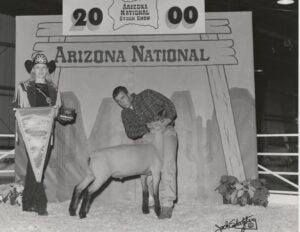
While many of the show pigs in the 2000s were more level in their design, with plenty of muscle shape, they remained somewhat frail in comparison to pigs to come in later years.
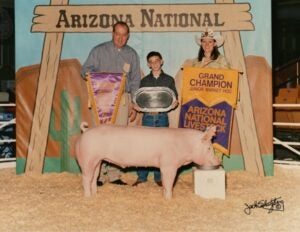
Market goats also began gaining traction in the 1990s, with boer goats taking center stage at 2000-era market goat shows.
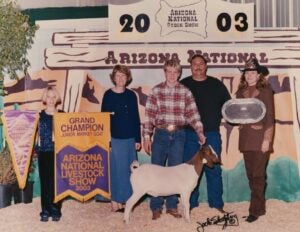
»Related: Why should you support local junior livestock sales?
Modern-day show livestock took shape in the 2010s
Stock show enthusiasts might sigh relief over the type of livestock that became more prevalent in the 2010s. All species saw increased depth and structural improvements in the past decade.
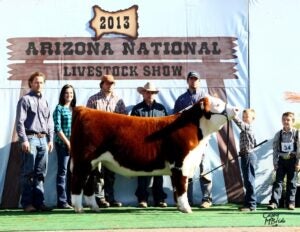
Hogs changed in leaps and bounds, with softer, more balanced looks as breeders focused on easy-feeding-looking pigs. However, as pigs transitioned, they went through phases in the 2010s of being more moderate, long-bodied, lower to the ground, and heavier conditioned.
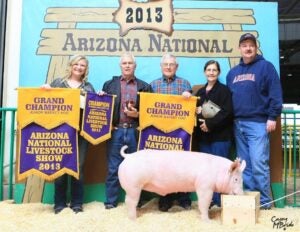
Sheep also changed dramatically in terms of depth, muscle, and condition in the 2010s.
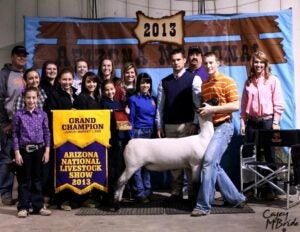
Today’s modern livestock
Today, major livestock shows represent breed cattle, crossbreds, swine, sheep, and goats. Major shows often bring in monumental sale premiums, scholarships, and spectators.
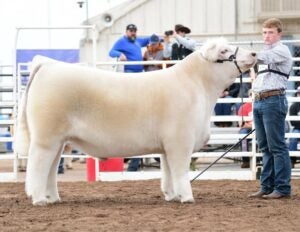
The livestock exhibited are well-trained, specifically bred, and exhibited by youth dedicated to showing their livestock at the highest levels.
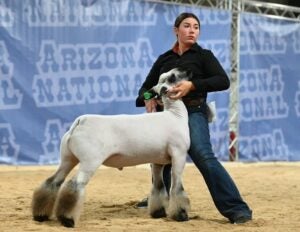
Thousands, and even hundreds of thousands (depending on the event) of livestock supporters and the public, attend the major shows each year to watch youth exhibit their livestock.
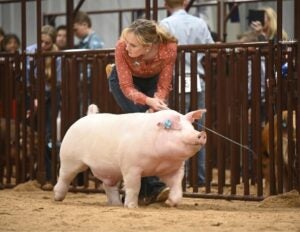
»Related: West Virginia 11-year-old Brantly Poling: Breaking barriers through hunting and 4-H livestock
Heidi Crnkovic, is the Associate Editor for AGDAILY. She is a New Mexico native with deep-seated roots in the Southwest and a passion for all things agriculture.



